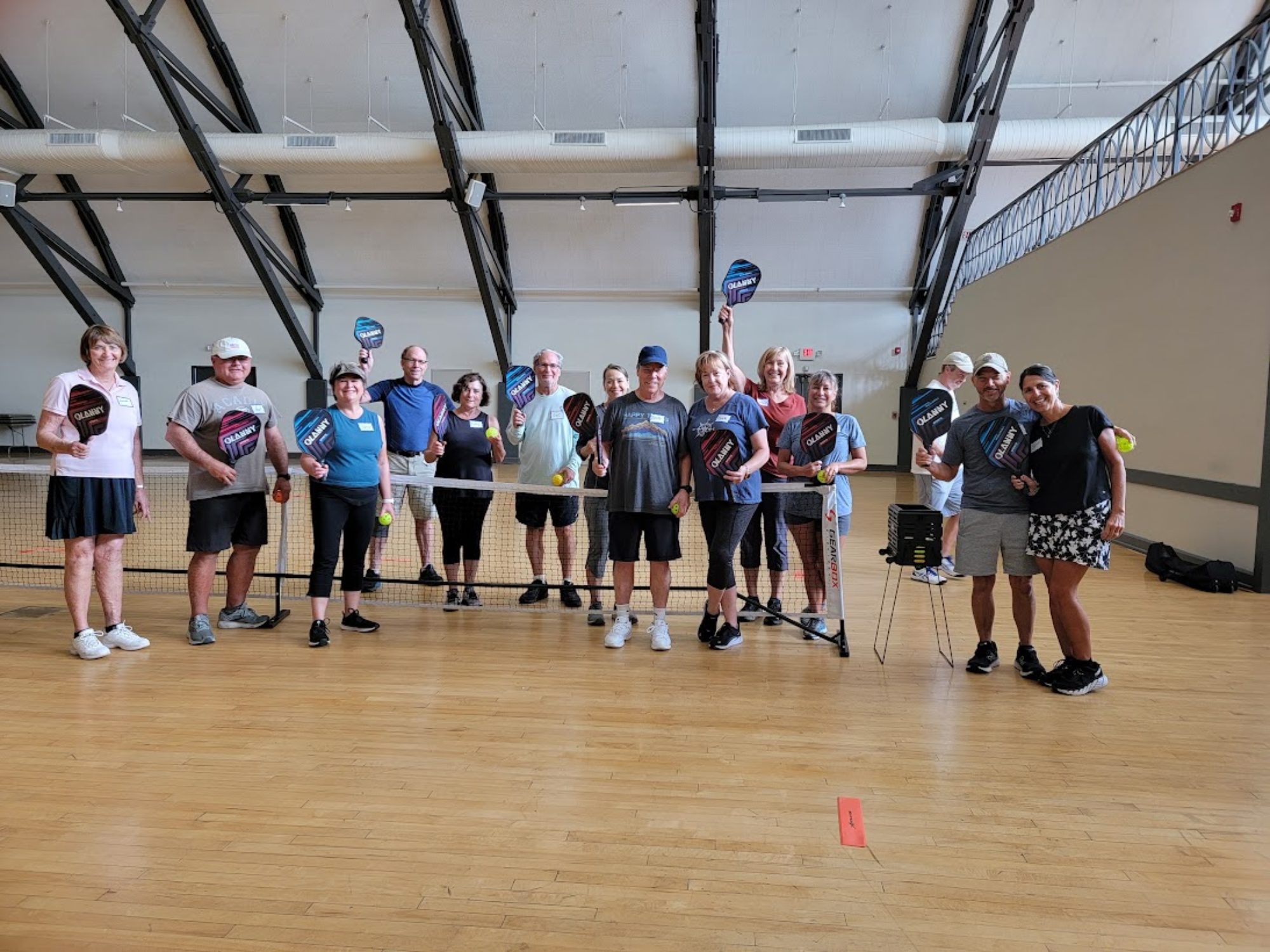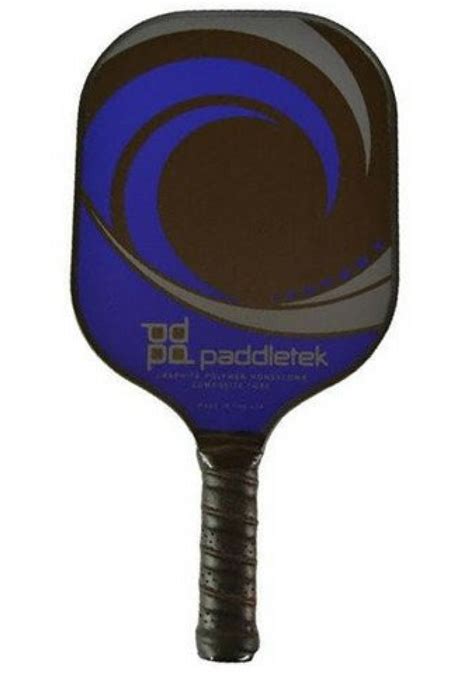Pickleball players are always searching for the perfect paddle to make them an immediate expert player. However, I’m not sure that paddle exists. What makes a player great is…practice, practice, practice.
What are paddles made of?
Paddles are made of different materials. I started off with the big, heavy wooden kind that the YMCA had for beginners. It didn’t take me long to start perusing the sport store for a better and lighter paddle. Confusing? Yes it was. There was different materials, weight, style, design and gripe to take into consideration.
Materials:
Pickleball paddles generally have a core material and a facing material. The cores are typically made of either, nomex, polymer or aluminum honeycomb. When you hear honeycomb core today, they’re usually referring to the most common; polymer honeycomb core. However, nomex cores and aluminum cores are also comprised of honeycomb cells.
Nomex – is a harder material which will perform longer due to the density of the material and smaller honeycomb size. These Nomex paddles are louder than the polymer core paddles and have slightly less power but fantastic control.
Polymer – is softer and has larger honeycomb cells – this is a good material that holds up well. Because it’s a softer material it is quieter and has great power but you’ll sacrifice some control compared to nomex and aluminum.
Aluminum – With very similar performance to the Nomex core, aluminum cores have honeycomb construction. However, primarily due to the weight and density of this material, they don’t have the kind of power you’ll find with polymer. It’s greatest feature is the superior control – the downsides are noise and the ability to dent.
On the outside
In general, you’ll see paddles made with three types of facing; fiberglass (also called composite), graphite and carbon fiber. Any one of these facings can be applied to one of the cores mentioned above. Here’s the quick run-down.
Fiberglass – this is probably the most common facing you’ll see on the courts. It’s not as strong as graphite or carbon fiber but has more power (pop).
Graphite – also very common, graphite is strong and provides great ball control but you’ll sacrifice a bit of power.
Carbon Fiber – similar to graphite but more durable, this material provides the ultimate in ball control. Again though, you will lose a bit of power.
From the USPBA Rule Book
2. Surface. The paddle hitting surface shall not contain holes, indentations, rough texturing, or any objects or features that allow a player to impart additional spin on the ball. Paddle roughness is determined using a Starrett SR160 Surface Roughness Tester (or equivalent). The allowable limits for roughness shall be no greater than 30 micrometers (µm) on the Rz reading (average maximum height, peak to valley) and no greater than 40 micrometers on the Rt reading (average maximum height, peak to valley). All readings will be taken in six different directions. 2.E.2.a. Paint. The surface may be painted but must otherwise adhere to the general surface requirements. 2.E.2.b. Reflection. The paddle hitting surface shall not be adversely reflective, such that it has the potential to obscure the vision of opposing player(s). Paddles shall not have any measurement exceeding 80 GU. Measurement is to be taken at the universal measurement angle of 60 degrees with ETB-0833 Self-Calibration 20° 60° 85° Surface Glossmeter Tester 0-200 GU or equivalent. 2.E.2.c. Depictions. Any writing or pictures on the paddle must be in good taste. 2.E.3. Size. The combined length and width, including any edge guard and butt cap, shall not exceed 24 inches (60.96 cm). The paddle length cannot 8 USAPA & IFP Official Tournament Rule Book exceed 17 inches (43.18 cm). There is no restriction on paddle thickness. 2.E.4. Weight. There is no restriction on paddle weight
Weight
Pickleball paddles generally range in weight from 6.8 oz (about the weight of a softball) to 14 oz (almost the weight of a can of green beans).
The advantage of a lighter paddle is that it is easier to maneuver (especially up at the net during quick volleys).
The disadvantage of a light paddle that is too light, is that you experience more of the impact/vibration in your arm & elbow because there is less mass to counter the ball. Of course, this is much less in pickleball compared to tennis, for example, but it can make quite a difference.
The heavier your paddle, the more “oomph” it adds to your slams & hard shots, but the more strength it takes to control it on the softer shots.
Don’t know your hand size?
Height test
This informal test is supposed to work for both men and women. It’s simple and works for the people we’ve tested. Remember, if in doubt, go with a smaller grip. (Source: https://www.pickleballcentral.com/Pickleball_Paddle_Guide_s/49.htm)
Height………..Grip Size
Under 5’2″…….4 inch grip
5’3″ to 5’8″…..4 1/4 inch grip
5’9″ & taller…4 1/2 inch grip
Finger test…Hold your dominant palm up. Notice your palm has three major creases. Take a ruler and measure from the middle crease of your palm, up to the tip of your ring finger. This measurement should reflect the perfect grip size for you. If you are unsure between two sizes, choose the smaller size.
How to Check the Fit of your Pickleball Paddle
To verify the fit of your paddle, or when trying several paddles, use the following method to verify sizing. If you are unsure between two sizes, choose the smaller size. Here’s why.
Grip a paddle with your normal grip and see if you can slide the index finger of your other hand between your fingertips and the heel of your hand gripping the paddle. Your finger should fit snugly between the two without having to move your fingers.
If you must shift your fingers farther away from the heel of the hand to get your index finger in between the two, the grip might be too small.
If you have space between your index finger and your fingers or heel of your hand, the grip might be too large.
1. How do I pick a paddle? There are so many choices!The best way to select a paddle is to try them out! Ask your fellow pickleball players if you can test-drive their paddles. Try various weights and grip sizes. If you find a paddle that feels good and balanced in your hand try to get that paddle’s weight. We will hand weigh paddles to match the weight that you are seeking.
2. I’m buying my first paddle, any advice?Your first paddle should have a classic pickleball paddle shape. You can add specialty paddles once you have a great classic paddle in your bag. The classic paddle is approximately 7 ¾ – 8 inches wide and 15 ½ – 15 ¾ inches long.
3. What’s the difference between fiberglass and graphite paddles? Fiberglass paddles often weigh a little more that graphite paddles. Because they are a little heavier than graphite paddles, fiberglass paddles are considered to have more power. Graphite paddles are considered to have more control or finesse. Both graphite and fiberglass paddles are lightweight and strong. There is a general perception that graphite is better but no one has studied if there is a difference in how the ball comes off a graphite vs. fiberglass paddle.
4. Why do so many composite paddle have a over lapping edge guard?You’ll find an edge guard around the edges of a most composite paddles. The edge guard maintains the integrity of the paddle and provides a covering to the open honeycomb interior. Without an overlapping edge guard there is a risk the paddle will de-laminate, and be ruined. If a paddle de-laminates, the face of the paddle will pull up from the honeycomb interior, destroying the paddle.
5. How do I find a paddle with power?Looking for more power? Select a heavy-weight or super-heavy-weight paddle. Power is all about weight. The heavier the paddle, the more power you have.
6. How do I find a paddle with more control?Looking to improve control? Select a light-weight or middle-weight paddle with a smaller head size. Control is all about maneuverability and quick responses. Be lighting-fast with a lighter, smaller paddle.
7. How long should a paddle last?How long a paddle lasts depends on how you care for it and how often you play. Top-notch players who play daily usually expect to retire a graphite or composite paddle after about one year. For people playing a couple of times a week, a paddle should last around three years. Wood paddles are extremely durable and will last many years.
8. How do I find a quiet paddle? My neighbors don’t like the happy pickleball pop. Answer: Teach your neighbors how to play and they won’t complain anymore.
Click here to order the Tempest Wave on Amazon.
9. What is a “Sweet Spot”?All paddles will have some sort of “sweet spot” in the center of the hitting surface, regardless of the dimensions, as does a tennis racquet, baseball bat, or table tennis paddle. It’s a matter of physics, nothing else. The key is to hit the center of the paddle, which takes practice and coordination.
10. Are there indoor and outdoor paddles?Paddles are not made specifically for indoor or outdoor play. Balls are made specifically for indoors or outdoors, but not paddles.
11. Are there men’s and women’s paddles?Paddles are not made specifically for men or women. Paddles are gender-neutral.
12. I’m a former tennis player, what paddle should I choose?Former tennis players or racquetball players often like a paddle with a longer handle like the Enforcer, Power or Elite paddles. The longer handle enables a two-handed backhand and more room for quick hand switches.
13. What difference does handle length make?Longer paddles handles, such as those five inches or longer, provide more reach on ground strokes, added leverage on serves and slightly more power overall.
My best recommendation for beginners is to go for a classic shaped paddle around $50.00 – $75.00. As you improve, you may want to purchase a more expensive and responsive paddle that fits your style of play. I hope this information helps you with understanding the different paddle types.
Thank you for reading,
Pickleball Terry





Good job. Well done covering all the bases!
I love your suggestion to try out the pickleball paddles that your friends use in order to find one that you would like to have as your own. We just went from tennis to pickleball because we moved into a colder climate and did not want to give up playing sports for an entire season. Pickleball seemed the logical choice and we love it. We are set on it enough to invest in some paddles that will be customized to our game. We will visit a sporting goods store this week to buy our pickleball paddle.